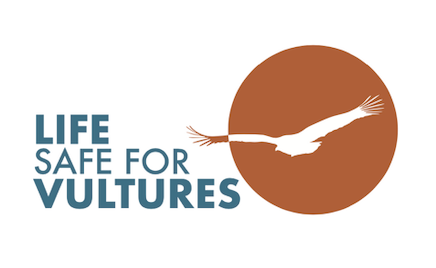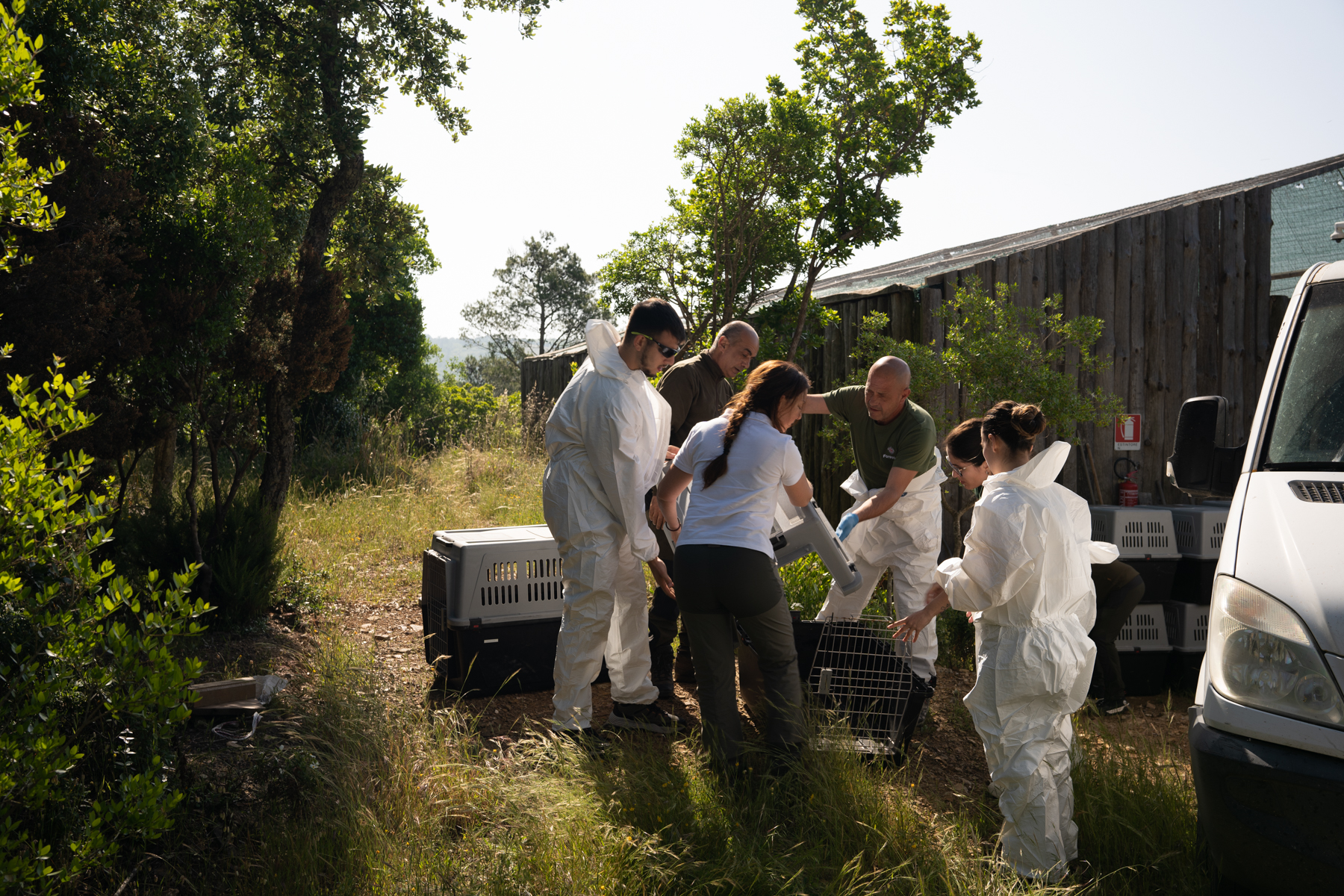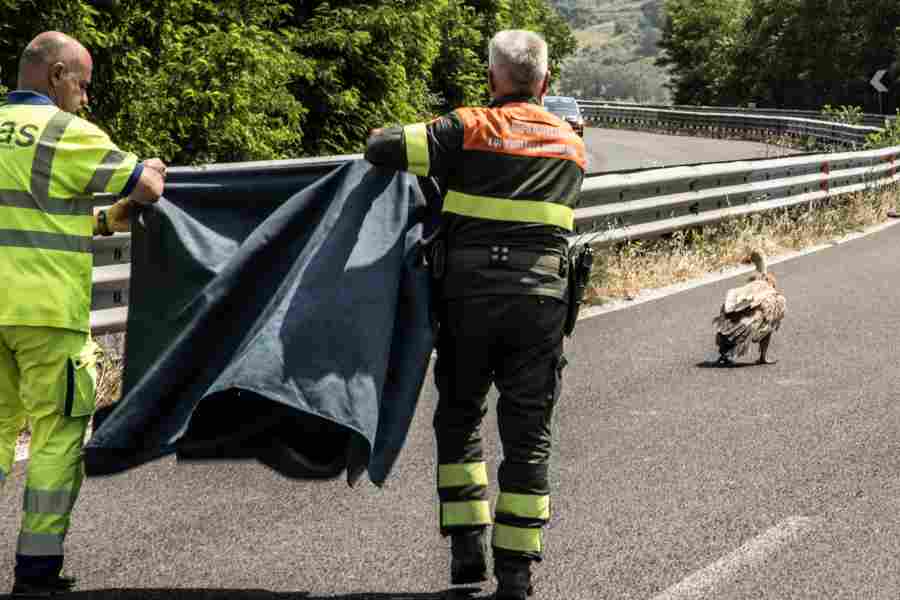In recent days, a further 21 Griffon Vultures have arrived in Porto Torres from Spain, poised to take centre stage in the LIFE Safe for Vultures project, aimed at ensuring the presence and long-term well-being of the Griffon Vulture population in Sardinia. Among these individuals, one hatched in captivity, while the remaining twenty were rescued and rehabilitated in Spain. They are now set to participate in the repopulation plan, working to reintroduce Griffon Vultures to Southern Sardinia, where they historically played a vital role in the ecosystem, particularly in extensive farming, before becoming extinct post-World War II due to various factors.
From Spain to Sardinia for conservation
The recent arrivals in Sardinia, comprising seven males and fourteen females, are mainly juveniles. With the exception of the captive-bred individual that hatched in Mallorca zoo, the remaining individuals are of wild origin, coming from Spain. Every year, several Griffon Vultures are rescued due to illness or injury, receiving vital care at wildlife recovery centres such as AMUS and Los Hornos in Extremadura. Found in weakened conditions, they underwent rehabilitation before being donated by Junta de Extremadura. After completing the necessary quarantine periods and health checks at AMUS, they were ready for their transport to Sardinia. These young Griffon Vultures embarked on a journey spanning around 2000 km, half by land and the other half by sea, from Extremadura to the Barcelona port, before arriving at Porto Torres in Sardinia, an action coordinated by the Vulture Conservation Foundation (VCF).
Repopulation of Griffon Vultures in Southern Sardinia



Upon arrival in Sardinia, the regional Forestas Agency, a key partner of the LIFE Safe for Vultures project, received the vultures. The staff of the Bonassai Wildlife Recovery Centre in Sassari welcomed and accommodated the animals in the “quarantine” aviaries, concluding a journey lasting more than 48 hours. The Forestas veterinary team, coordinated by Marco Muzzeddu and Lucio Mandas, checked the health status of the Griffon Vultures following transport, monitoring their condition. Following a two-week quarantine period, they will transition to the settling-in aviary in Villasalto, Gerrei, joining another sixteen specimens that will be released soon and will constitute the new nucleus of the colony in Southern Sardinia. In a few months, the newly arrived 21 vultures will also be able to join them in the wild. Spending several months in the acclimatization aviary is a crucial step before releasing the birds into the wild, typical for restocking and reintroducing species. Under the guidance of local partners, they will acclimate to their new environment, socialize, and feed in the aviary over the coming months. This project action is considered fundamental for the repopulation of the Griffon Vulture in the southern part of Sardinia and throughout the island, replicating the excellent results centred in the north-western quadrant, between Bosa and Alghero, thanks to LIFE Under Griffon Wings.

A new aviary to support repopulation efforts
Since 2021, the LIFE Safe for Vultures project has built upon the successes of its predecessor, LIFE Under Griffon Wings, ensuring continuity in conservation efforts. Project partners, supported by a network of recovery centres and zoos across Europe, are striving to restore vulture populations in territories where they once thrived but are now threatened or extinct.
“The Villasalto aviary was created taking advantage of the experience gained over the years and improved, to allow continuous monitoring of the animals and contain the stress due to captivity.” The choice of the area involved careful study and evaluation of the most suitable area, which did not neglect the historical research on the distribution of the species in the Sarrabus-Gerrei and the collection of direct testimonies which attest to the main causes of the disappearance.”
-Dionigi Secci from Forestas
The most ambitious LIFE Safe for Vultures project starts from those bases, which intends to bring the Griffon Vulture back to territories from which it has disappeared for decades, also involving local communities in this process. Villasalto thus became the epicentre of one of the crucial operations of the project, in which the partners carried out all the preliminary actions necessary to limit the risks that had caused the disappearance of the Griffon Vulture. In the scientific community but also in the local population, there is growing anticipation for the opening of the aviary, scheduled for next month. For Professor Fiammetta Berlinguer of the Department of Veterinary Medicine of the University of Sassari, scientific coordinator of the project, LIFE Safe for Vultures is now coming to life; a very important step towards the return of the Griffon Vulture throughout the island is imminent.
The past, present and future of vultures in Sardinia
Sardinia was once home to three vulture species; however, threats during the late 20th century led to the extinction of the Cinereous and Bearded Vulture, leaving only the Griffon Vulture. From an estimated population of 800-1200 individuals in the 1940s, the Griffon Vulture population dwindled to only 30 breeding pairs and 130 individuals in 2013. The remaining colony holds a significant genetic heritage as the last natural breeding population in Italy.
To reverse the Griffon Vulture population decline and address threats hindering the species’ recovery, partners from Italy and abroad joined forces in the LIFE Under Griffon Wings project in 2015. This initiative saw the release of more than 80 Griffon Vultures, leading to the species’ resurgence in areas long devoid of their presence. The population grew to 57 pairs and 250 birds by 2020. From 2021 onwards, the LIFE Safe for Vultures project took over conservation actions and continued to see promising development.
As part of the project’s efforts to monitor demographic trends and assess the impact of conservation initiatives, the latest census saw a notable increase in the Griffon Vulture population in Sardinia. With estimates ranging from a minimum of 332 individuals to a maximum of 378 individuals, representing an 11.8% surge from 2022. The latest census data align with breeding monitoring results from 2023, revealing the presence of 83 pairs and the hatching of 55 fledglings. Notably, the successful integration of both native and released vultures is evident, with mixed couples now observed, showcasing the effectiveness of restocking endeavours. Furthermore, the 2023 census revealed the discovery of nine mixed pairs, with seven identified in the Bosano area and two in the Algherese area, marking the second consecutive year where a pair entirely composed of adults introduced through restocking has been recorded.
This promising trajectory bodes well for Griffon Vulture conservation efforts in Sardinia. Additionally, the success of these efforts has attracted another vulture species – the Egyptian Vulture. Once considered a rare visitor to Sardinia with no breeding records, an Egyptian Vulture pair has established a nesting presence on the island and successfully bred for the past few years.
The LIFE Safe for Vultures project

LIFE Safe for Vultures is co-financed by the EU’s LIFE Programme to restore the vulture guild in Sardinia. The University of Sassari leads the project in collaboration with Agenzia Regionale Forestas, Sardegna Corpo Forestale, E-Distribuzione and the Vulture Conservation Foundation. LIFE Safe for Vultures builds on the work of the successful LIFE Under Griffon Wings, with the ultimate objective for Griffon Vultures to regain their historic ranges and distribution areas from the central-eastern part of Sardinia to the south and promote the long-term survival of the species on the island. An additional feeding station will be established south of the island, and 40 additional Griffon Vultures will be translocated and released.

A big thank you to Junta de Extremadura, AMUS and Mallorca Zoo for their important contributions.





